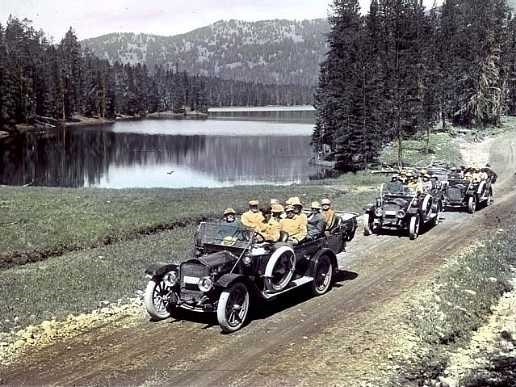Need to Know
Early Days
Prior to the mid-20th century, US federal agencies responsible for managing resources for outdoor recreation did not have consistent definitions or methods for collecting visitor use data. The NPS began collecting visitor use data in 1904, the US Forest Service began making some estimates of recreation use in the early 1920s, and other agencies started data collection on visitor use in the 1930s when the depression prompted the federal government to collect a variety of statistics. Without consistent definitions of ‘visit’ or ‘visitor day’ it is not possible to add data from one site or agency to that of another. This lack of a ‘single statistical voice’ for the agencies managing recreation on federal lands and waters highlighted the need for a uniform method of collecting and reporting visitor use across agencies.
Haynes
Interdepartmental Coordination and a Uniform Method
The Outdoor Recreation Resources Review Commission was established in 1958 to address concerns for public recreation space and to facilitate interdepartmental coordination. A result of this and other efforts was passing Public Law 88-578 Land and Water Conservation Fund Act of 1965.
Section 6(a), in particular, stresses that monies appropriated from the fund are to be allotted proportional to visitor use:
“Monies appropriated from the fund for Federal purposes shall, unless otherwise allotted in the appropriation act making them available, be allotted by the President to the following purposes and sub-purposes in substantially the same proportion as the number of visitor days in areas and projects hereinafter described for which admission fees are charged under Section 2 of this act.”
The primary characteristic of visitor use is a ‘Visitor Day’.
- A Visitor Day is an ‘aggregation of 12 Visitor Hours’
- A Visitor Hour is ‘the presence of one or more persons on lands or waters which comprise a recreation resource for continuous, intermittent, or simultaneous periods aggregating exactly 60 minutes’
A Modern System
Between the passage of the LWCF in 1965 and the late 1980s, the NPS developed and institutionalized a formal system for collecting, compiling and reporting visitor use data. The current NPS Visitor Use Statistics Program is based on the original direction and still uses the Visitor Day and Visitor Hour concepts developed therein. It is managed to retain the characteristics of uniformity, comparability, flexibility, neutrality, technical feasibility, and operational practicality.
The objectives of the modern NPS Visitor Use Statistics program are to:
- Provide a statistically valid, reliable, and uniform method of collecting and reporting visitor use data for each independent unit administered by the NPS
- Support regular collection, and timely publication, analysis and interpretation of these data
- Enact quality control checks, verify measurements, and ensure consistency and comparability of data among areas of the NPS
Looking for data?
Visitor Use Statistics Data PortalLast updated: September 22, 2025
